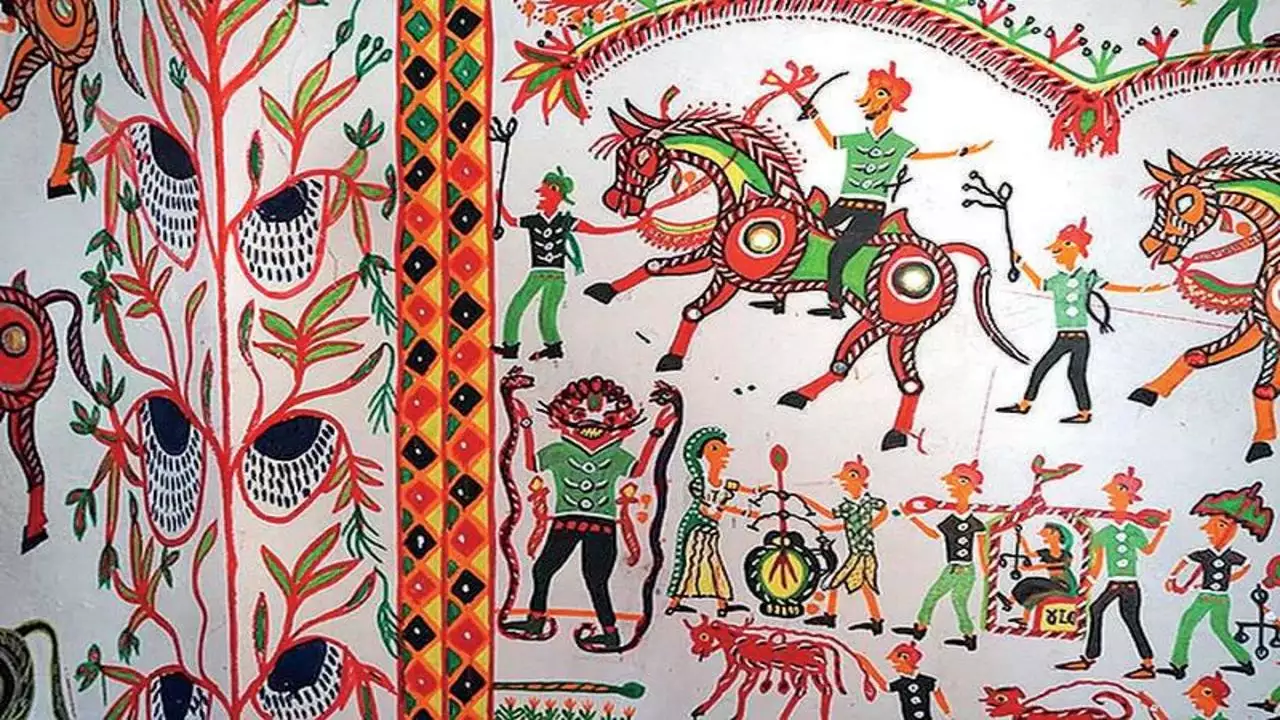Pithora Painting is a traditional art form that has been practiced by the Central Indian Tribes for centuries.
This unique form of tribal art involves the creation of beautiful and intricate paintings on walls, floors, and other surfaces using natural pigments and brushes.
History and Origin
Pithora Painting has its roots in the Bhil and Rathwa tribes of Central India.
These tribes have been practicing this art form for generations and it has become an integral part of their culture.
The paintings were originally created as a form of worship, with each painting depicting a particular deity or spirit. Over time, the art form evolved to include other subjects, such as animals, nature, and daily life.
Technique
Artists create Pithora paintings using natural pigments and brushes made from bamboo, twigs, or animal hair. They typically paint on a red clay base, applying the paint directly onto the wet surface using a technique known as “fresco.” This method allows the pigments to seep into the clay, creating a long-lasting bond. The artists use a combination of bold lines, intricate patterns, and vibrant colors to create their masterpieces.
Themes and Symbolism
Pithora Paintings often depict the daily life of the tribes, including hunting scenes, farming, and other activities.
However, they also depict spiritual and mythical themes, such as deities, spirits, and other supernatural beings.
The paintings are often rich in symbolism, with each element representing something specific.
For example, the horse is a recurring theme in Pithora Paintings and represents strength, courage, and freedom.
Preservation and Future
Pithora Painting is a unique art form that is slowly disappearing due to the advent of modernization and globalization.
With the increasing demand for handmade and sustainable products, there is a renewed interest in Pithora Paintings, which could help ensure its survival for future generations.



